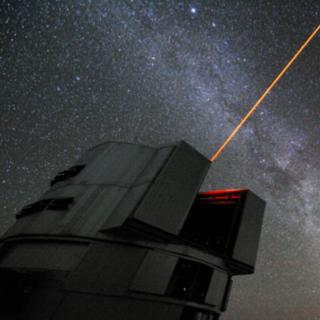Bibcode
Ruiz-Lara, Tomás; Gallart, Carme; Bernard, Edouard J.; Cassisi, Santi
Referencia bibliográfica
Nature Astronomy
Fecha de publicación:
5
2020
Número de citas
168
Número de citas referidas
143
Descripción
Satellites orbiting disk galaxies can induce phase space features such as spirality, vertical heating and phase-mixing in their disks. Such features have also been observed in our own Galaxy, but the complexity of the Milky Way disk has only recently been fully mapped by Gaia Data Release 2 (DR2) data. This complex behaviour is mainly ascribed to repeated perturbations induced by the Sagittarius dwarf galaxy (Sgr) along its orbit, pointing to this satellite as the main dynamical architect of the Milky Way disk. Here, we model Gaia DR2-observed colour-magnitude diagrams to obtain a detailed star formation history of the ~2 kpc bubble around the Sun. It reveals three conspicuous and narrow episodes of enhanced star formation that we can precisely date as having occurred 5.7, 1.9 and 1.0 Gyr ago. The timing of these episodes coincides with proposed Sgr pericentre passages according to (1) orbit simulations, (2) phase space features in the Galactic disk and (3) Sgr stellar content. These findings most probably suggest that Sgr has also been an important actor in the build-up of the stellar mass of the Milky Way disk, with the perturbations from Sgr repeatedly triggering major episodes of star formation.
Proyectos relacionados

Evolución Galáctica en el Grupo Local
La formación y evolución de galaxias es un problema fundamental en Astrofísica. Su estudio requiere “viajar atrás en el tiempo”, para lo cual hay dos enfoques complementarios. El mas extendido consiste en analizar las propiedades de las galaxias a diferentes distancias cosmológicas. Nuestro equipo se concentra en el otro enfoque, denominado
Emma
Fernández Alvar
